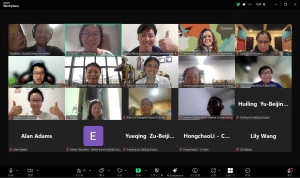The Supreme People’s Procuratorate recently released data to summarize the implementation of the public interest litigation system over the past five years.
This system was officially established on July 1, 2017, following the revision of the Civil Procedure Law and Administrative Procedure Law at the 28th meeting of the Standing Committee of the 12th National People’s Congress.
By the end of June this year, more than 670,000 public interest litigation cases had been filed, including about 58,000 civil lawsuits and around 614,000 administrative cases.
The number of cases is increasing year by year, from more than 100,000 in 2018, to more than 169,000 in 2021. In the first half of 2022 alone, it reached more than 101,000 cases, and the total for the whole year is expected to significantly exceed the previous year.
Thanks to this new litigation system:
- a total of 7.86 million mu (1.29 million acres) of damaged arable land, forest land, wetlands and grasslands has been restored;
- about 58,000 mu of illegally occupied state-owned land has been restored;
- more than 45.84 million tons of garbage and solid waste has been recovered or cleaned up;
- about 1.82 million kilograms of counterfeit and sub-standard food has been investigated and recovered;
- about 60,000 kilograms of counterfeit and smuggled medicines have been detected and recovered;
- 72 billion yuan ($5.02 billion) of state-owned land transfer fees have been recovered;
- and 9.35 billion yuan has been recovered for ecological restoration and environmental management.
Public interest litigation has played an important role in many fields such as environmental protection, work safety, personal data security, and heritage protection.
Another noteworthy statistic is that the pre-trial stage response and rectification rate has continued to rise — from 97.2 percent in 2018 to 99.5 percent in 2021.
It is believed to be the best judicial outcome if the vast majority of cases can be resolved at the pre-trial stage, by means of non-litigation methods such as consultations or procuratorial mediations to urge the relevant parties to take the initiative to correct their mistakes.



